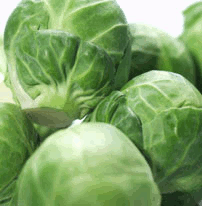Menopause—are yams a good choice?
Thank you very much for taking the time to provide us with feedback about our yam profile and our section in that profile about premenstrual syndrome and menopause. We definitely agree with you that there were potential implications in our text that were clearly inaccurate, and we've made significant revisions in this section of our website for that reason. However, we respectfully disagree with you on several counts.
First, there is no question whatsoever that several diosgenins (steroidal saponins) have been isolated from Dioscorea. There is also no question that these diosgenins have affects on the endocrine organs of animals. We've included some of the research citations below, including a citation showing the impact of diosgenins on adrenal glands in rats. While none of the above facts contradicts your statement that Dioscorea fails to contain human-like hormones (and it is well-established that the human body cannot covert diosgenin into progesterone), the above facts do suggest that the steroidal saponins found in wild yams impact animal endocrine systems. Furthermore, combinations of diosgenin, estrogen, and DHEA have been used in studies on ovarectomized rats to assess impact on osteoporosis, and the diosgenin has been found to be a potentially helpful component in this regard. Once again, the use of diosgenin as a purified extract together with actual hormones is not going to tell us whether yams eaten as food can alter endocrine function and help protect against, or help treat, osteoporosis, or other events in rats without ovarian function. But it's also difficult to ignore the fact that something is going on here with respect to diosgenin and health patterns that include endocrine function, even though we know that the connection does not involve direct conversion of diosgenin into progesterone.
Second, we believe that there has been ethnobotanical use of Dioscorea in relationship to female endocrine function, although not primarily menopause. Dioscorea opposita is a species we're familiar with in Traditional Chinese Medicine for it's use in separation of heat from damp. While we've seen its use most often connected to kidney function, we've also seen Dioscorea (shanyao in Chinese herbal formulations) used in connection with sweating and in relationship to lactation. Dioscorea is also sometimes included in current Chinese herbal formulations used for menopause alongside of other Chinese herbs. So while we'd agree that the primary use of Dioscorea has not been in relationship to menopause, we'd nevertheless describe yam as having been used in relationship to female endocrine function - a conclusion that might be seen as running in parallel to some of the findings in diosgenin research.
Finally, we've cut-and-pasted an abstract from a 2001 study of wild yam cream on menopausal symptoms in humans. Even though this study found "little effect" of wild yam on such symptoms, symptom changes from the use of wild yam cream were not totally absent, even though they were not statistically significant. We'd once again conclude that evidence for consumption of yam as a menopause-supportive food is lacking at the present time, but we'd also conclude that there is sufficient reason to want more research in this regard, based on what we know about steroidal saponins and some clear history of wild yam use in connection with health problems that are endocrine-related and in part menopause related.
References:
1. Komesaroff PA, Black CV, Cable V, and Sudhir K. (2001). Effects of wild yam extract on menopausal symptoms, lipids and sex hormones in healthy menopausal women. Climacteric. 2001 Jun;4(2):144-50.
2. Luo, H., and J. Huang. "." Zhong Yao Cai 24, no. 7 (2001): 474-6.
3. Ma, H. Y., Z. T. Zhao, L. J. Wang, Y. Wang, Q. L. Zhou, and B. X. Wang. "." Zhongguo Zhong Yao Za Zhi 27, no. 7 (2002): 528-31.






